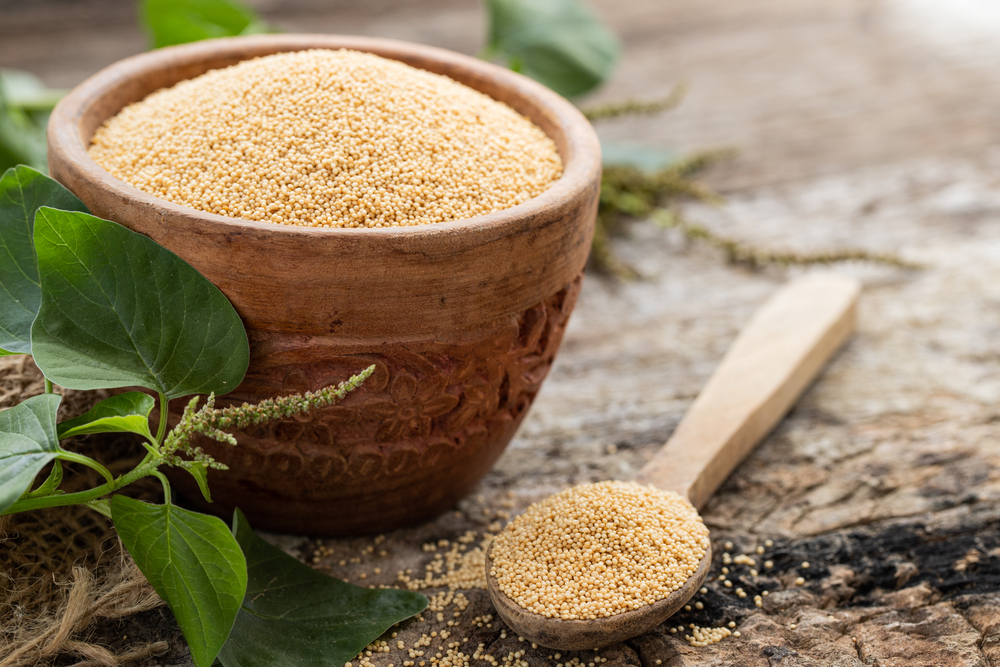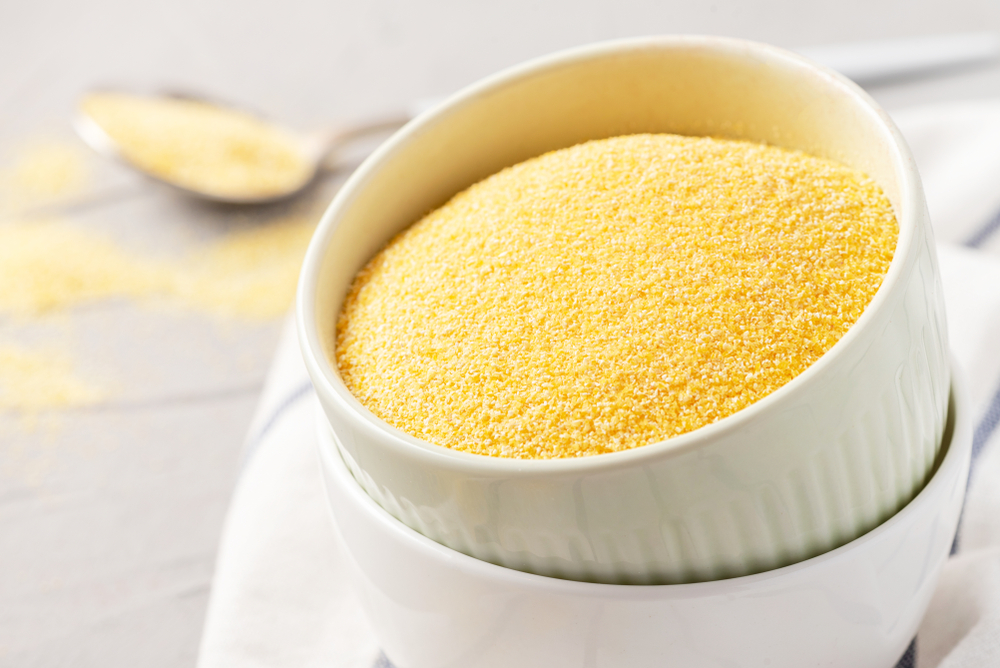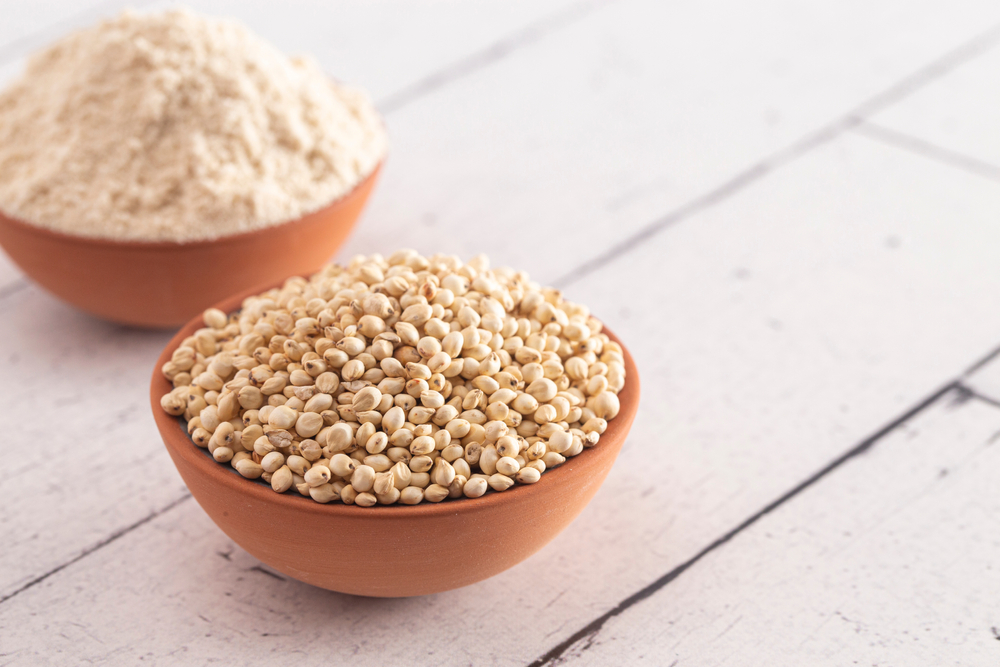Grains can be found almost everywhere in the world. Cuisines from across the globe typically have a grain traditionally associated with their food culture. Nowadays, thanks to our globalized food system, we have greater access to a wider variety of foods than ever before, and grains are no exception.
A great diversity of grains can be found at your local grocery store, and others can easily be purchased online and delivered to your house. You have countless options at your disposal. Not to mention that diversifying grain crops by incorporating more ancient grains like sorghum and millet may help decrease food shortages and, in turn, lessen some pressure on global hunger.
If you want to add some new grains to your diet but don’t know much about how to prepare them, this article is for you! Here we discuss how to use different types of grains, from always-available rice to lesser-known crops like Kamut. You will shortly be exploring the amazing world of grains and expanding your palate.

Amaranth
Amaranth is an ancient grain, but its popularity in the US only grew in the 1970s. There are actually up to 70 plant species in the genus amaranth, yet only 12 are cultivated by humans. This grain was first domesticated around 6,000 years ago, although archaeologists date its origin around 8,000 years ago in northern Argentina.
Amaranth has a nutty and sweet flavor with a grassy aroma. This grain doesn’t contain gluten and is frequently used in chili and soups or cooked down to a porridge-like breakfast. For a cereal-style grain, culinary experts recommend using 2 ½ cups of water to 1 cup of amaranth or 1 ½ cups of water for pilaf-style.
Similar in cooking time and size, amaranth is a good quinoa alternative. Just remember that amaranth has a much bolder taste than quinoa. Nutritionists also advise sprouting this grain before preparing it to boost digestion.
Barley
Barley is another ancient crop and is also one of the most produced grains in the world. According to Statista data, about 147 million metric tons were produced during the 2021/2022 crop year, although a large quantity of this is used for beer production.
Barley belongs to the Poaceae family, and it is safe to say that it’s about as old as time. According to experts, the type of barley we eat today was first developed from a wild variety over 10,000 years ago.
Most folks are familiar with the traditional beef barley soup, but there are other meals you can cook using this grain. Due to its subtle nutty flavor and slightly chewy texture, barley is quite versatile, making it very comparable to farro or brown rice. In addition to stews and soups, barley pairs well with roasted veggies and makes a great hot cereal.
Whether you choose refined pearl or hulled barley, you can prepare it similarly to rice based on the 3:1 ratio rule. Cooking hulled barley, which is minimally processed to remove the indigestible outer hull, may take up to an hour. Pearled barley, on the other hand, cooks more quickly — in about 40 minutes — since it has the bran removed and polished down.
Brown Rice
When compared to white varieties, brown rice contains all three parts of the grain: the bran, germs, and endosperm. You can replace white rice with brown varieties in most recipes, from rice bowls to fried rice, but don’t forget that brown rice has a chewier texture.
Since brown rice contains bran, it provides higher amounts of fiber, and it takes longer to cook than white rice. This results in higher water absorption. Use 2 cups of water for every cup of brown rice. Short-grain brown rice should take up to about 75 minutes to cook, while medium and long grains should take about 30 minutes.
Brown rice has been known for its multiple health benefits. It contains more nutrients than white rice, which is mainly found in the bran. It is also a great source of magnesium, which has been linked to helping manage blood sugar levels.
Bulgur
Bulgur, a key ingredient in Middle Eastern cuisines, is a whole wheat grain frequently compared to couscous. But unlike couscous, bulgur is often sold partially boiled and only takes about 12 minutes to cook. Oh, and it doesn’t even require cooking over direct heat. Just add 1 cup of bulgur to 3 cups of boiling water, and the grain will absorb all the liquid after about 20 minutes.
One of the most popular uses for bulgur is tabbouleh, a fresh, citrusy Levantine grain salad packed with lots of parsley and, of course, bulgur wheat. However, bulgur isn’t just used in tabbouleh; you can also use it for other pilaf-style dishes and grain salads.
Given its history, it is no wonder that this type of grain is so popular in Middle Eastern countries. Actually, the region has a 4,000-year legacy of producing bulgur, with mentions related to it appearing in the New Testament of the Bible.

Cornmeal (Polenta and Grits)
Native to North America, corn seems to be everywhere in the American food scene. According to the USDA data, the US produced 15.1 billion bushels in 2021, the second-highest crop year ever. Cornmeal is a widely available processed ingredient that’s made by grinding the dried grain.
You can use finely ground cornmeal for baked goods like spoonbread and cornbread, but chances are you’re more familiar with using cornmeal for cooked grains like polenta and grits.
Grits are coarse stone-ground cornmeal, and you can find them in both yellow and white. The classic Southern American dish comes in the form of a creamy porridge that can be sweet or savory. While some chefs advise soaking grits overnight, you can skip this step. However, grits still need an hour of cooking and a 4:1 ratio to achieve the proper consistency.
Polenta is made from stone-ground yellow cornmeal, and its popularity is currently rising in the United States. It doesn’t need pre-soaking, and depending on the recipe, you will need to apply a 4:1 or 5:1 ratio rule. For firmer polenta that can be fried up as little cakes, add 4 cups of water to 1 cup of cornmeal. For creamy polenta, you will need that additional cup of liquid.
It takes about 45 minutes to cook polenta. Also, Italian chefs often use it as a base for foods like beef stew or ragù.
Farro
Despite being closely associated with Italian cuisine, farro is actually an ancient grain that has Middle Eastern origins. This grain, which was brought to Italy by the Romans, has been an essential ingredient in the Italian peninsula for a long time.
Nowadays, farro is made from three different grains: farro grande (spelt), farro medio (emmer), and farro piccolo (einkorn). The emmer variety is the most common in the US.
There’s more than one way to cook farro. Some will prepare it using the absorption rule at a 3:1 ratio, but others prepare it in a large pot of water, like pasta, until it’s tender. It’s up to you; however, you should know the cooking time depends on the level of processing of the grain.
Whole farro takes about 40 minutes to fully cook; semi-pearled (hull and some bran removed) can take up to 30 minutes, while pearled (hull and bran polished off) takes around 20 minutes.
Most folks aim for an al-dente texture. You can use it in grain salads or turn it into a risotto-style dish known as farrotto.
Freekeh
Here’s another ancient crop. Freekeh is a smoked or roasted young green durum wheat with the shells removed. Often referred to as a superfood, it provides 4.5 grams of fiber and 5 grams of protein per serving and is an excellent source of nutrients, including magnesium, zinc, manganese, and phosphorus.
Like many foods, there is tradition attached to this grain. There’s even a story according to which in 2,300 BC, a Middle-Eastern city fearing war and starvation made the decision to harvest the young green heads of wheat. The city was set on fire, which means the green wheat burned as well. However, the fire left locals with an edible grain.
Nowadays, that nutty, smoky grain is served in salads, especially blended with Middle Eastern flavors like tahini-lemon dressing. Prepare freekeh using the pasta method: boil it in a pot of water for 20 minutes or until tender.

Kamut
Given this grain’s nutritional profile, it’s quite surprising that more people aren’t including Kamut in their diets. Kamut (sometimes referred to as Khorasan wheat) is one of the lesser-known grains that has origins in the Middle East.
Its name is actually a registered name that comes from the Khorasan province of Iran. Kamut started to gain popularity in the late 20th century when farmers from Montana started growing it.
This grain can replace quinoa, although it is not gluten-free. Yet, Kamut boasts high amounts of protein. According to nutritionists, a cup of cooked Kamut provides 9.8 grams of protein and 7.4 grams of fiber. It is also high in phosphorus, niacin, magnesium, and zinc.
Boil it using the pasta method, but keep in mind that Kamut can take about an hour to cook. This nutty-tasing grain has a similar texture to wheat berries, which is why it is great in pilaf-style dishes or salads.
Millet
There’s evidence that millet was first grown in Northern China around 7,500 years ago. At first glance, millets look very much like seeds; in fact, they are grain seeds that function like whole grains. Millets, like amaranth, refer to around 50 different types of grass.
One example would be fonio, which is basically a tiny version of millet often consumed in several African nations. Millet cooks fairly quickly thanks to its size, but you have to be very careful when doing it. Using too much or too little water will easily botch your millet.
The ideal ratio is 2:1. Now, if you pre-soak this grain, you may need less water. When it comes to cooking time, millet needs about 20 minutes of simmering to cook. The result should be fluffy and light, similar to bulgur or couscous.
Millet has a subtle sweetness and a nutty flavor, making it perfect for those who follow a gluten-free diet. The cooked millet can be turned into little savory gluten-free fritters with spinach, feta, raisins, and herbs.
Oats
Before the idea of overnight oats became so popular, oatmeal had a bad rap for being a boring grain cereal. Oats belong to the Poaceae family and are the seeds f oat grass. They come in three different varieties: rolled, instant, and steel-cut. Basically, each variety starts out as whole unbroken grains (known as groats), but the processing makes the difference.
Instant oats are the most processed variety, similar to those instant oatmeal packets you can microwave. These oats are pre-cooked, rolled, dried, and pressed into thin flakes. This process makes them cook so quickly, in about one minute or so.
Rolled oats, sometimes called old-fashioned oats, aren’t pre-cooked but steamed and pressed. While they take a little longer to prepare (around 5 to 10 minutes), they are perfect for overnight oats because they won’t turn to mush like the instant ones.
Probably the most overlooked, steel-cut oats are groats sliced into smaller pieces. They take the longest to prepare (up to 30 minutes). Although overnight oats can be made with steel-cut oats, the texture is usually denser and chewier.
Quinoa
Labeled as a superfood that has become an American obsession in past decades, quinoa isn’t actually a grain. In fact, quinoa is a seed that’s harvested from the goosefoot plant. It belongs to the Amaranthaceae family, which means it is closely related to spinach, chard, and beets.
However, its nutritional profile is similar to other types of grains, which is why you will often find quinoa lumped into this category. According to nutritionists, a one-cup serving of quinoa provides 8 grams of protein and 5 grams of fiber, as well as high amounts of magnesium, manganese, folate, thiamin, and phosphorus.
Quinoa has been cultivated since the Inca Empire. There are even some regions in South America, such as Ecuador, Peru, and Chile, that have been producing quinoa for more than 5,000 years. Right now, quinoa is grown in different regions across the globe, including the US, but the top producing countries are still those from its indigenous regions.
These tiny seeds come in different colors, but you’re more likely to find the pale yellow quinoa on the store shelves. This grain has in its outer layer composition a compound called saponin, which gives quinoa a bitter taste. Those who don’t like its astringent taste should consider rinsing quinoa before cooking it.
You need 2 cups of water per 1 cup of quinoa, and it shouldn’t take more than 20 minutes to cook it. You can eat it on its own and have it as a side dish, added to salads or soups, or use it as an alternative to many other grains.

Sorghum
Sorghum was first cultivated 4,000 years ago in Africa but has become a staple of Southern cuisine in the US since then. Sorghum is thought to have been brought to America with ships transporting enslaved Africans. As a result, sorghum is deeply rooted in Southern African American cuisine traditions.
The green juice of the sorghum plant can be turned into syrup and used as a substitute for sugar. While the tiny grain kernels can be popped like popcorn, sorghum is also excellent in a salad or cooked like rice.
This grain takes about one hour to cook, but if you have a pressure cooker, you can reduce the cooking time by half. Since it has a slightly chewy texture, sorghum can be a great alternative to brown rice or farro, whether added to a salad or consumed as a side dish. It goes well with ingredients like berries and nuts or warm flavors like cinnamon and ginger.
Teff
Another African grain, teff, is perhaps most known in its flour form, which is a gluten-free wheat flour substitute used to make the slightly sour Ethiopian flatbread injera. Teff traces its origin to Ethiopia over 6,000 years ago and has been a staple of their cuisine since then. Nowadays, it’s gaining popularity in the US thanks to its multiple health benefits.
This grain boasts 4 grams of fiber and 6.5 grams of protein in each ¾-cup serving. It’s also packed with magnesium, manganese, calcium, and zinc.
Teff grains are basically tiny dark seeds, and you can cook them similarly to millet, but the recipe requires a 3:1 ratio with up to 30 minutes of simmering. You can soak them overnight, although you can skip this step.
Teff has a distinct flavor — slightly sweet with subtle notes of coffee, hazelnut, and molasses. Because of this, it pairs well with warm flavors like ginger and cinnamon.
You may also be interested in 6 Superfoods You Should Eat After 50.







